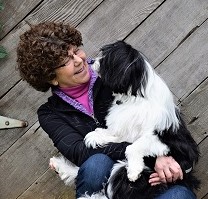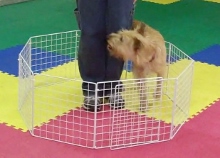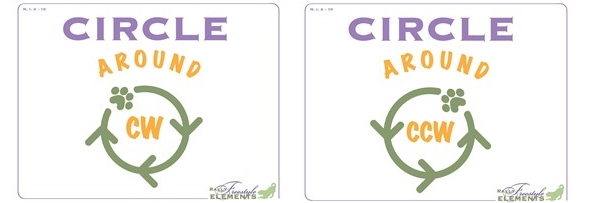Course Details
Rally-FrEe is a unique sport developed in 2012 that blends the structure of Rally with the creativity of Musical Freestyle. Originally designed to improve accuracy and precision in freestyle routines, it has since grown into a standalone sport enjoyed by dog sport enthusiasts around the world. Competitors can participate in both live and video events. To learn more, visit www.rallyfree.com.
Both Rally-FrEe and Musical Freestyle rely on strong foundation skills. These skills help dog and handler teams progress more confidently and efficiently as training becomes more complex. One key focus is transitions—especially those that return the dog to a position. Transitions allow the team to change direction or position smoothly, without interrupting the dog’s momentum. In this course, we’ll build confidence and precision in these foundational behaviors, using clear criteria, structured shaping, and environmental setup to support success.
Another core element of both sports is teaching behaviors on verbal cues, rather than relying on hand signals. We’ll walk through a step-by-step process for adding value and clarity to your verbal cues, helping both dog and handler avoid cue dependency.
Our primary focus will be on foundational skills such as circling from left and right, about-turn transitions, spin to position, pass-thrus, paw lifts, and how to build variations, transitions, and full moves from these elements. Many of these same skills were later adopted into AKC Rally’s Masters class.
This course is ideal for anyone curious about Freestyle or Rally-FrEe, and for instructors looking to add these sports to their curriculum. Whether you're exploring something new or deepening your current training, you'll find practical tools and plenty of inspiration here.
Here is an example of a Novice course!
Here is an example of a "Novice Skills Test" where you can earn a title in one pass!
And here is a compilation from a variety of levels
Teaching Approach
Each week will have multiple lectures. Most will be released on the first day of the new week. However some may be released a little later in the week to allow for a progression of skills. Lectures include written and video descriptions of each exercise in a step-by-step approach. Lectures and exercises start at a foundation level and take you through the process to use the skills in a variety of ways. Supplemental lectures may be provided depending on need.
Homework and troubleshooting are listed in a separate lecture for easy access.
Video demonstrations of the exercises include the instructor's personal training sessions as well as actual students working the exercises. There are a variety of breeds and sizes represented in the demo vids. Demonstration video length varies between 1-2 minutes. Many of the demo videos are captioned.
Each team works at their own pace and at a level where their dog is showing understanding and confidence for the exercises for that week. Each week contains several exercises depending on dog and handler skill level and need.
Students will be provided with both general and specific written feedback, often including timestamps for clarity. Students will be able to show their work for any previous weeks as well as the current week’s exercises for continued feedback.
There are alot of skills and material in this course. While some students will complete all course material, there is no expectation that all skills/behaviors will be completed within the 6 week course. However the detail of the lectures and exercise videos will allow students continue the process and complete the skills on their timeline through their library.
Most all exercises, especially the base foundation skill, can be completed in a small space.
The equipment list is very specific to the class exercises so you will want to be sure to have them ahead of time to get the most benefit from the class.
This class will have a Teacher's Assistant (TA) available in the Facebook study group to help the bronze and silver students! Directions for joining will be in the classroom after you register.
 Instructor: Julie Flanery
Instructor: Julie FlaneryJulie Flanery (she/her), CPDT-KA has been working professionally with dogs and their handlers since 1993. She focuses on the needs of the dog and helping people form a strong relationship, through clear communication, and positive reinforcement. She has placed Obedience...(Click here for full bio and to view Julie's upcoming courses)





